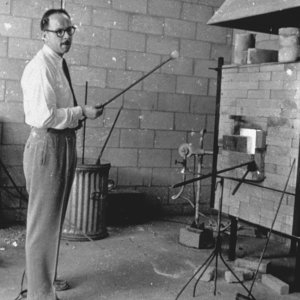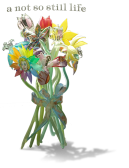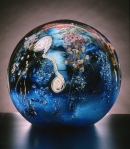One of my favorite albums is by jazz musician Michael Franks. It’s called “The Art of Tea,” and serves as the inspiration for this article.
For many people, an important aspect of decorating includes building and showcasing one or more collections. Choices include fine china, sculptures or other works of art – or any number of unique and interesting items.
One of the most popular collectibles over the years has been the teapot. Since its introduction hundreds of years ago, this little pot of warmth has been sought after by collectors just as the brew itself has been consumed by tea connoisseurs.
Given its seemingly unlimited potential for individual expression, it is no wonder that the teapot has sparked the interest of many an artist over the years. In its lifetime, the teapot has evolved from strictly functional to sculptural; offered up as works of art in shapes and sizes as varied as the artists who create them.
Here’s a look at some interesting examples of teapots as art:

Suzanne Crane has recently added red to her glaze palette, something her collectors will applaud. 9″ x 7″ x 8″
SUZANNE CRANE
Crane’s wheel-thrown stoneware pieces are largely functional and their forms are inspired by both Etruscan pottery and the vague Orientalism of the Arts and Crafts movement.
Surface treatment is a reflection of the artist’s deep love for the endless “variation on-a-theme” offered up by wild plants. She presses botanical specimens that she gathers from the woods and creek-sides near rural Virginia studio into the slightly stiffened clay, arranging them both to capture the natural flow of the vine or frond, but also to flatten the object in an abstraction similar to that of 19th century natural history book illustrations. “I work both forwards and backwards in this process,” says Crane, “throwing a piece to best compliment a particular specimen, or searching for a specimen to work with a piece I’ve already thrown.”

Pair of miniature teapots by Michael Banner.
Maquettes with enamel lids. Completely functional.
6″ x 3″ x 3″
MICHAEL BANNER
Banner creates a variety of hand-wrought sterling silver pieces, including teapots that have found their way into museum collections.
Contemporary hand-fabricated sterling silver is created in the artist’s
studio using traditional silversmithing tools and techniques such as anticlastic shell and sculpted hollow forms. Color field enamels are vitreous high fired cloisonne enamel over embossed fine silver with hand cut cloisonne.
Banner’s work has been compared by museum curators to the design traditions of Knox and Georg Jensen. Sculptural as they are, Banner’s teapots are also functional.

Stacked teapot set by Jim Cohen evokes an art deco sensibility. Sterling silver, wood and acrylic.
12″ x 4.50″ x 7″D
JIM COHEN
For Jim Cohen, the journey that he currently finds himself of started a little over ten years ago when he resigned his position as an attorney in Washington, D.C. to pursue a Master of Fine Art degree. The fact that he wound up in Sante Fe, New Mexico couldn’t hurt, either.
“My mantra is whimsy-aesthetic-function” says Cohen “I try to imbue each piece I make with those
elements. I want the viewer to see the piece as more than what it appears to be and to enjoy the piece visually, functionally and intellectually. ”
KIRSTEN STINGLE
“The goal of my work” says Stingle, “is to create honest depictions of the human quest toward self-revelation and a contemporary identity.” The artist combines discarded elements from the past with my ceramic work. The mixed-media creates an intriguing dialogue of materials and informs the viewer of the scope of the figure’s journey within each narrative. One of her recent pieces, “The Ecstasy of Leda,” takes on the form of a teapot.
LUCY DIERKS
“My pieces express my delight with nature,” says Dierks, “and, like nature, I want them to reflect a harmony of form, surface, and purpose.” The artist strives to make small intimate pieces whose design and texture invite you to hold them. “The contradictory aspects of birds intrigues me,” she says. “I find the exquisite detail of their claws and the patterning of their feathers very satisfying. I perch them on my pieces to encourage contemplation and conversation.”

Small Teapot #3 by Cary Joseph
Thrown and stretched stoneware, unglazed, fired to 2400F for 3 days.
7″ x 6″ x 5″
CARY JOSEPH
Cary Joseph creates wood-fired stoneware that has been thrown, textured and stretched, “where the fire and ash are allowed to act on every pot in a unique manner.” The stretching opens the pores in the clay, creating a natural stone like surface that becomes infused with the ash from the fire. “I fire only two or three times a year,” says Joseph, “and because wood firing is a communal event (the firings last from two to five days), it is a true collaboration with the loaders and stokers; and most importantly, the kiln itself.”
MARNE RYAN
“I love playing with fire,” says Ryan, “suspending the rules of what can’t be done with metal and integrating the elegance of form and function within the barely controlled chaos of my life.” Each of Ryan’s pieces is constructed from fused, multipatterened layers of sterling silver.
BARBARA SEBASTIAN
Sebastian creates wheel-thrown, high-fired teapots, jars, and other functional ware. “Inspired by an experience with a raven and a persimmon in Kyoto, I continue to explore other inspiring moments to capture my work.” Sounds like some follow-up questions are in order here.

“Dogs and Beetles Teapot” by Mariko Swisher
Terra cotta teapot/ lid finely glazed with Japanese brushes.
8.50″ x 7″ x 2″
MARIKO SWISHER
Insects and animals, in part from the Sendai, Japan coast where Swisher grew up, inspire the earthen vessels she creates. The artist finely decorates the pieces with Japanese calligraphy brushes, sgraffito tools and then fires them.\

“Dancing Teapots” by Stephan Cox
Glass is blown, then hand carved to create fluid movement
18” x 14” x 14”
STEPHAN COX
Stephan Cox produces work contemporary in nature, ranging from small detailed pieces to larger vases with less action and more color. All of Cox’s work is recognizable for its movement and untraditional forms. His designs are carved using sandblasting, diamond tooling and other cold working techniques. Each piece is an original work of art.
The artists featured on this page, and their artistic teapots, will be part of the 25th annual Washington Craft Show, November 16 – 18 at the Walter E. Washington Convention Center in Washington DC. For hours and other details, visit the show’s website at www.WashingtonCraftShow.com.














